 With the continuous innovation and development of smart homes, products have been greatly improved in terms of performance, and companies will also devote more attention to this. However, in view of the entire market, smart homes still face some of the more prominent status quo, such as high prices, complexity of operations, and inadequate after-sales service systems. In fact, these are the main concerns of consumers, and they also become There are several important considerations for consumers to purchase smart home products. From concept promotion to growth application, mature development, and the development of smart home has gone through three major stages. The product technology has been continuously improved, and people choose product models to value the cost performance of products.
With the continuous innovation and development of smart homes, products have been greatly improved in terms of performance, and companies will also devote more attention to this. However, in view of the entire market, smart homes still face some of the more prominent status quo, such as high prices, complexity of operations, and inadequate after-sales service systems. In fact, these are the main concerns of consumers, and they also become There are several important considerations for consumers to purchase smart home products. From concept promotion to growth application, mature development, and the development of smart home has gone through three major stages. The product technology has been continuously improved, and people choose product models to value the cost performance of products. Smart home four major development period
First generation concept promotion period
As early as 2004, there were manufacturers developing the first generation of digital smart home products, mainly to achieve building video intercom, home security alarm, information management, telephone and other functions. The system adopts the PHILIPSTM 1300 series chip commonly selected by domestic smart home manufacturers at that time. The chip is clocked at 143/166 MHz and uses the PSOS operating system. The video uses the H.263 compression protocol and the audio uses the G.723 protocol. The application of the PHILIPSTM 1300 chip video intercom solution led us to quickly enter the smart home market. The first generation of smart home products is still a concept product. At this time, the market is also in the concept promotion period, and the market recognition is not high. Not many applications.
The second generation of growth applications
With the gradual popularization of the concept of smart homes and the first generation of products through the market inspection and user feedback, in 2006, it launched the second generation, relatively mature technology of smart home products. The second generation uses Hass HI3510 multimedia chip video codec solution, Hass Hi3510 chip is a high integration, programmable, support MPEG-4AVC/H.264, etc. based on ARM9, DSP dual processor core and hardware acceleration engine. Multi-protocol high-performance communications media processor. The second-generation indoor intelligent terminal uses H.264 protocol for video encoding and decoding, encoding and decoding can reach 30fps@CIF; audio encoding and decoding using G.711 protocol, supports lip synchronization, echo cancellation, noise suppression and other audio processing functions.
Compared with the first generation smart home products, the clarity of video images has been greatly improved, and the communication stability has been further enhanced. At the same time, the functions are more diversified, and it can realize functions such as home appliance control and multimedia control. In terms of system control, it can not only realize local control, but also realize remote management and control through the network, mobile phone, and telephone. At present, this generation of smart home products has become the main force of digital products. The functional positioning has a great match with the customer needs of the current smart home systems, and the system has a good response in the application of the project.
In the early stage of smart home application, these sounds are often heard on the project: “What about video mosaic problems? How to deal with unclear call sounds? How to deal with unstable equipment, how often does hang up? How does the system adapt to large capacity and large flow? The information needs?†These problems are also common problems plaguing domestic and foreign smart home product manufacturers. Faced with these problems, the company chose the best-matched chip solution for audio and video transmission and stability in the building intercom industry. At the same time, the company selected high-performance chips to enhance the hardware processing capacity (upgrade 8M to 32M) and adopt a higher-end device. Operating system, targeted optimization of programming languages; video decoding using H.264 standard, audio using G.711 communication protocol, the system architecture using a distributed structure to improve the system's thinness.
Through this series of technical measures, at present, many of the problems encountered in the past have been solved. In the process of function realization, the manufacturer chose a more efficient technical implementation scheme. For example, the current mature, stable and standardized KNX/EIB European bus is used as the communication standard in lighting control; in the interactive function of television, the smart home system has 1080P. The HDMI high-definition output interface; in the realization of function control, the increase of the use of WIFI and ZigBee wireless transmission and other technical solutions, the reference of these technical solutions, not only effectively solve the common problems in the previous system, but also make the smart home function application More flexible and easier for users to use.
Third-generation and fourth-generation innovation leaps
Through years of efforts, many companies have made continuous breakthroughs in the research and development of digital smart home products and have developed third-generation smart home products. The third-generation smart home system mainly uses the home gateway as the core device of the home, and uses the home-used electric television as the display terminal, and uses a wireless universal remote controller to replace all kinds of remote controllers in the home for home appliance control. The universal remote controller can be used as the interaction device with the home gateway and the terminal sub-device of the building video intercom to realize the functions of visual answering, calling, unlocking, and the like, and can also realize all the homes connected to the home network. The electrical appliances are used for remote control, status query, and wireless remote control to realize the interactive function of operating functions with multimedia devices such as TVs. The third-generation products integrate a wide range of subsystems and powerful functions on the system. This will inevitably lead to a relatively advanced concept of some control models and a relatively high price positioning of system products. These are virtually the limitations of customer acceptance. At present, this system is more used for the demonstration of digital home application platform. However, as the market for smart home applications matures, the degree of user demand continues to increase. At the same time, with the implementation of national hardcover housing policies, the system will have a broad scope. Market prospects.
At present, the fourth-generation smart home system is also under continuous development. The fourth-generation smart home system will seek new solutions on the hardware platform and software development platform, and strive to make greater breakthroughs. In terms of hardware, it is necessary not only to further improve the running performance of the product, but also to adapt to a variety of chip solutions at the same time; on the basis of the existing operating system technology, the operating system will also select the most innovative and developing operating system platform at the same time. , further enrich the human-computer interaction interface; communication protocol, will fully adopt the standard transmission protocol, so that the system has a stronger scalability and compatibility.
Smart home product selection, cost-effective key
1, excellent price/performance ratio
Looking back at the sales of the smart home market in 2012, the cost-effectiveness of the product remains a major factor for consumers to consider. For consumers with a certain degree of affordability, the high decoration costs will also make them particularly careful in the purchase of smart home products, for fear of spending more money. For those businesses that have unreasonably priced and inflexible marketing strategies, consumers are all adopting evasive policies and have shown good value for money. Of course, for consumers, although price is important, product quality and performance cannot be ignored. Therefore, consumers in the purchase of home products will be in the performance and price to find a cost-effective optimal value, with the most affordable price to buy quality products. As consumers demand more and more cost-effective products, if the company simply regards product quality as the only competition point, consumers will not necessarily buy it. On the contrary, those products with higher price/performance ratios can gain a firm foothold in the home market.
2, convenient operation
Although smart homes are powerful, they can't pick up the "top hats" that are cumbersome and complex. When consumers buy back a smart home product, it often takes a long time to learn how to operate it. Smart homes were originally designed to subdivide people's tedious lives, but they had to allow consumers to learn how to use them for a long time, essentially subverting its most essential meaning. The lack of user-friendly design and tedious operations is the reason why smart home systems suffer from user neglect. “Because the smart home incorporates multiple systems, it is powerful and therefore very complex to operate,†said the industry insider. This leads many users, especially the elderly in the home, to use them badly or simply do not want to use them. For these reasons, smart homes have once been reduced to a new trend, and they have not really played their essential role.
3, a sound after-sales service system
For each manufacturer, the after-sales service of the product is an important factor in the development of the company. Because the stability of the smart home system is not strong enough, it will be inevitable for the latter to be maintained. This requires smart home manufacturers have a strong and sound service system. Second, when consumers purchase smart home products, after-sales service is also an important factor for them to consider. Because consumers bought this product, it also purchased its after-sales service. Since the current smart home market in China is relatively confusing, once a consumer fails to buy a product, it often happens that the after-sales service can not keep up. This has become a “wounded injury†in smart homes. At present, the after-sales service system for domestic smart homes needs to be improved, and the after-sales service situation of each manufacturer is also different. Therefore, as a consumer, it is necessary to understand the quality of the corresponding after-sales service before purchasing the product. As a smart home manufacturer, it is necessary to establish a sound after-sales service system as soon as possible.
4, corporate thinking
Excellent cost-effectiveness, convenient operation, and a sound after-sales service system are three issues that must be tackled by smart home companies. They are also important cornerstones for the long-term development of smart homes. It is true that the development process of smart homes in China has been greatly improved, but it is still far away from the goal of large-scale application. Reducing costs, pricing properly, innovating products, paying attention to details, and improving services are all necessary for companies. Only with continuous innovation and development of smart home, build a good product cost-effective, in order to ultimately win the consumer's desire to purchase.
We Manufacture, Exporter & Supplier- Aluminum Reducer
We can manufacture two kinds of Aluminum Reducer Pipe: 6061 Butt-Weld Concentric Reducer (Conc Red) and Eccentric Reducer .
Which are commonly used to change the pipe size or pressure in a piping system.
Aluminum Pipe Reducer,Aluminium Alloy Reducer are made of Aluminum seamless tube within the range of DN 15 – DN500.
Aluminum Reducer Fittings Specifications
Thickness :
3mm-50mm
Outer diameter:
15mm-500mm
Alloy Grade:
1000 series : 1070A,1060,1100,1200
2000 series :2A11,2017,2A12,2024
3000 series :3003 3A21
5000series :5A02,5052,5A03,5A05,5A06,5083,5086,5454
6000 series :6061,6063,6A02,6082,6005
Surface
Mill Finish, Anodized, Powder Coated, Wooden Finish, Polish
Packing
Export standard
Payment Terms
100% irrevocable L/C at sight or 30% T/T in advance as deposit,70% balance before shipment
MOQ
1 Piece
Delivery time
20-45 days after receiving L/C or deposit
Loading Port
Xingang Port,Tianjin
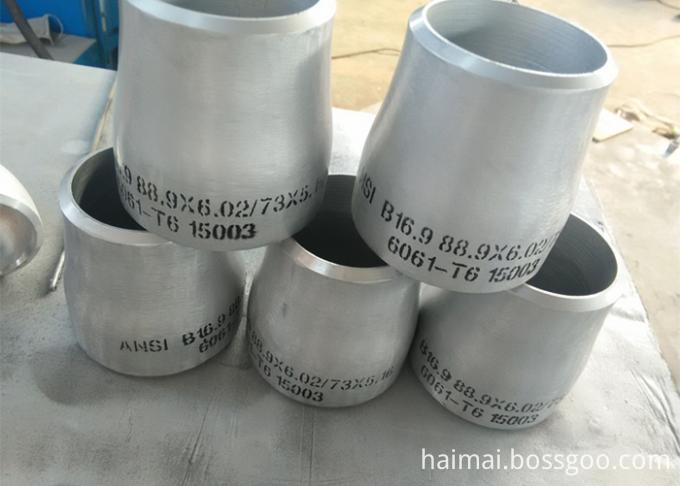
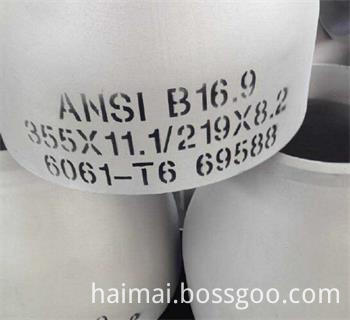
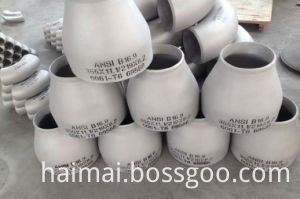
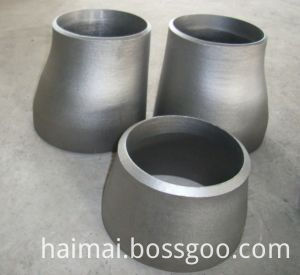
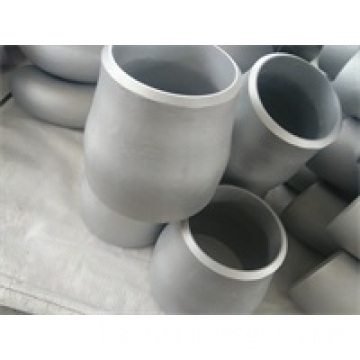
Aluminum Reducer
Aluminum Reducer,Aluminum Reducer Pipe,Aluminum Pipe Reducer,Aluminium Alloy Reducer,Aluminum Eccentric Reducer,Aluminum 1060 Concentric Reducer,Aluminum 6063 Concentric Reducer
HEBEI HANMAC MACHINE CO., LTD. , http://www.chinahanmac.com